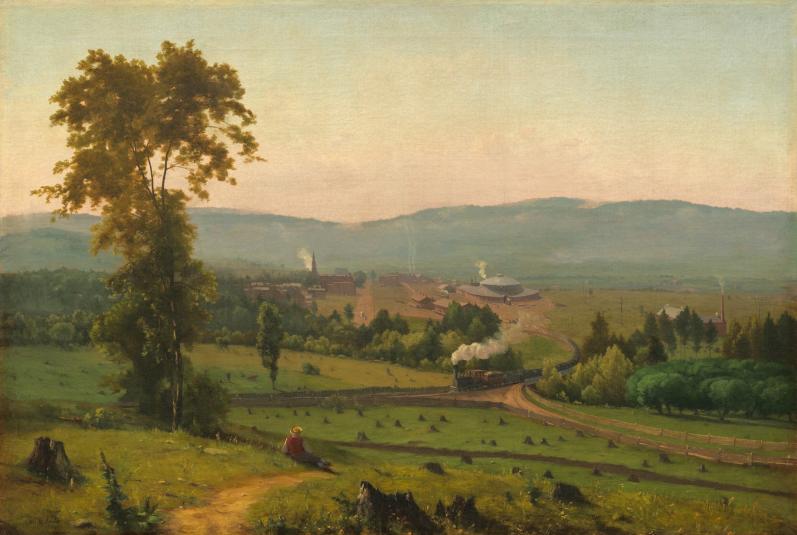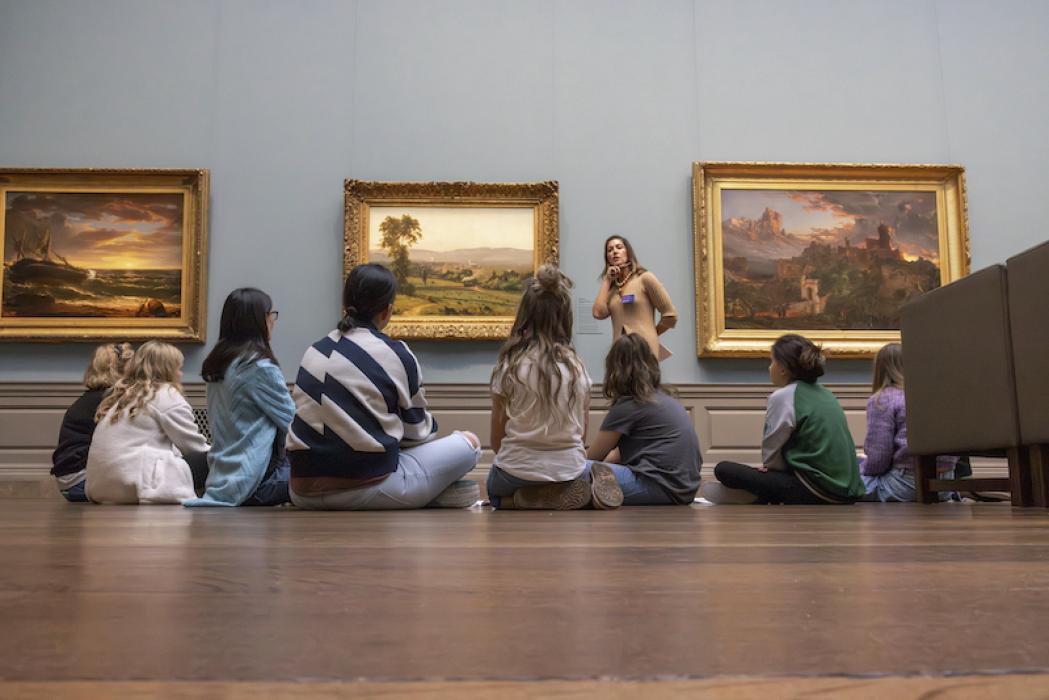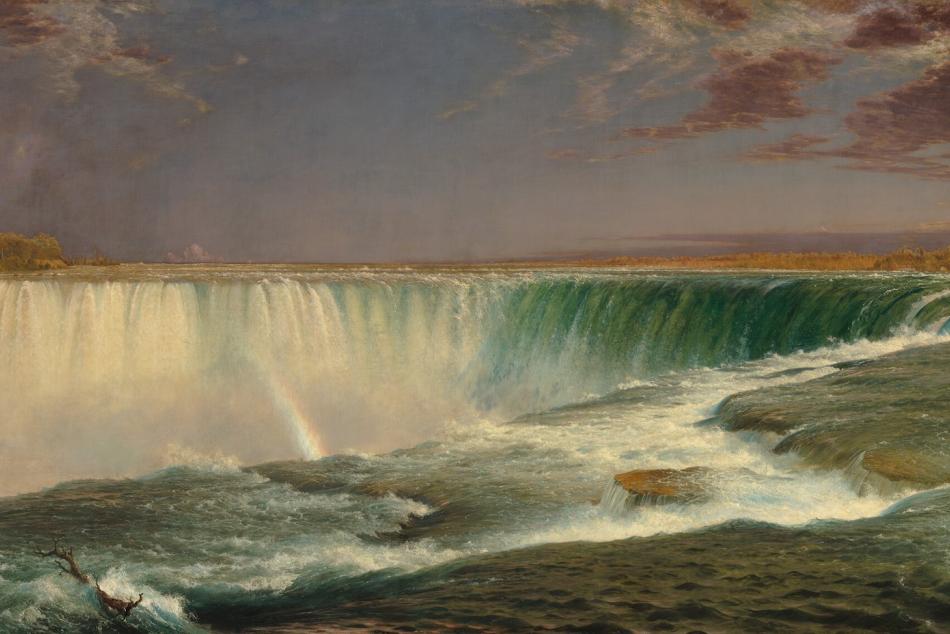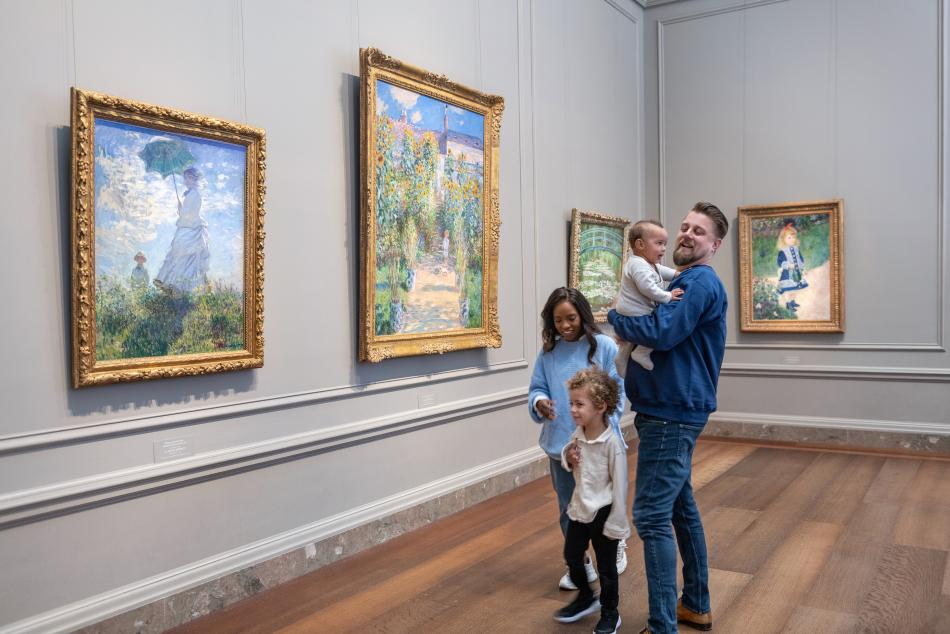Rediscovering George Inness’s “The Lackawanna Valley”

When Lisa Novak was a teenager, she read an unbelievable story about American artist George Inness. In 1891, in a Mexican thrift shop, Inness rediscovered a painting that he had made some 40 years earlier.
But it wasn’t just that coincidence, it was also the subject of the painting—Pennsylvania’s Lackawanna Valley. Novak and her family had lived there before moving to Virginia.
She was surprised that someone had painted her former home—and even more that the work was now hanging on the walls of the National Gallery of Art. Novak had been here on school trips. But she says that, like a lot of people, she asked herself, “What’s in an art museum for me?”
“But when you have that kind of connection, and you hear about something like that, how can you not want to go see it?” So one day Novak made the trip.
After stopping at the information desk to ask where the painting was, she wove her way through the galleries. When she found Inness’s glowing The Lackawanna Valley, she was amazed. “I couldn’t believe some place I used to live was in this museum.”

That first impression would create a lifelong bond with the painting. When she later worked nearby, she would stop in during lunch breaks. After a spin around the West Building Rotunda, now one of her favorite spots in the city, she’d pay The Lackawanna Valley a visit. She brought visitors to see the work, sharing her personal connection and the remarkable story she had learned as a teenager.
She appreciated how easy it was to pop in and visit a picture of her home. And so she decided to become a National Member, to support the museum’s work of making art accessible to everyone. She understood the power of art—one visit could change everything. “Sometimes a piece just connects with you, and you’re not really sure why,” Novak says. “But that’s the fun of art.”
The Dilemma of The Lackawanna Valley
George Inness was a young artist in his early 30s when he received a tricky commission from the Delaware, Lackawanna, and Western Railroad Company. Its president John Jay Phelps asked for a set of paintings to advertise the railroad routes. Inness was a landscape painter who deeply considered how best to represent nature’s spirit and beauty. His client, on the other hand, was an industrialist and, according to some, responsible for destroying the nation’s wilderness.
But Inness needed the business. One composition was to show the railroad’s first roundhouse in Scranton, Pennsylvania. These donut-shaped buildings helped trains reverse direction. They were also used to conduct maintenance on the steam-powered locomotives, which were bringing coal from Pennsylvania mines to new markets like New York City.
Inness set the view on top of a hill, looking down at a forked track that curves away from a domed roundhouse. A train moving to our left, leaving buildings and a church steeple behind it. A hazy ridge of mountains rises in the distance.
In the foreground, a figure in a red vest and tan hat reclines on the hill next to a single tall tree. Landscape painters of the time often used such figures to draw in viewers. We can imagine ourselves on the hill looking down at the scene.

George Inness, detail from The Lackawanna Valley, c. 1856, oil on canvas, Gift of Mrs. Huttleston Rogers, 1945.4.1
Perched there, we are surrounded by tree stumps, evidence of forests cleared to make way for train tracks. Inness couldn’t ignore the cost of innovation. He visited Scranton in 1855 to prepare the painting, so he probably saw the pockmarks on this land, which had been home to the Lenni-Lenape peoples for centuries before Europeans arrived. (The word Lackawanna comes from a Lenape term meaning “stream that forks,” which describes the Lackawanna River.)
Inness leaves us to determine whether we, and the figure, admire the construction of the railroad or mourn the graveyard of tree stumps. While the artist did get paid for his work, it seems his client was not entirely pleased. The painting was eventually sold with a lot of office furniture, and it somehow ended up in a shop in Mexico.
It was there that Inness found it decades later. Visiting on his way to California, the artist recognized his painting hanging high up on a wall. He bought it for a few dollars and it stayed in his studio for the rest of his life. His daughter inherited the work and sold it some 30 years later. In 1945 Standard Oil heiress Mrs. Huttleston (Millicent) Rogers bought it for the National Gallery. It became the first American landscape painting in our collection.

How Today’s Students See the Stumps
On a recent Thursday afternoon docent Christie Kramer led a group of fifth graders and their parents into gallery 64. The Lackawanna Valley was the first stop on her tour of American paintings. Kramer invited the group to spend a few minutes taking the painting in. During a close-looking activity, they focused on the background, the middle ground, and then the foreground. Next, they wrote down three natural elements and three manmade elements that caught their attention.
The students eagerly pointed to the train, tracks, and roundhouse building. Then to the purple mountains and the figure on the hill. “What surprises you?” Kramer asked. One student answered: the stumps.
More than 160 years since it was first made, Inness’s painting is as relevant as ever. Today’s fifth graders are all too familiar with the price of development and industry. The hazy landscape might remind them of the smoky skies that plagued the DC area this year because of Canadian wildfires. They may have already heard of the ongoing struggles to preserve woodlands in Atlanta from development—or about the Standing Rock Sioux Tribe’s protest of Dakota Access Pipeline construction.
And just like Novak was on her first visit, these fifth graders are left with a new understanding of how to connect art to their lives. As Novak puts it, “Art joins us all together.”
You may also like

Article: The 19th-Century Blockbuster: Frederic Edwin Church’s “Niagara”
The American artist, skilled at both painting and publicity, created a sensation similar to the social media–famous exhibitions of today.

Article: George Morrison Gets His Due
The Minnesota painter merged abstract expressionism with traditional Ojibwe values.


